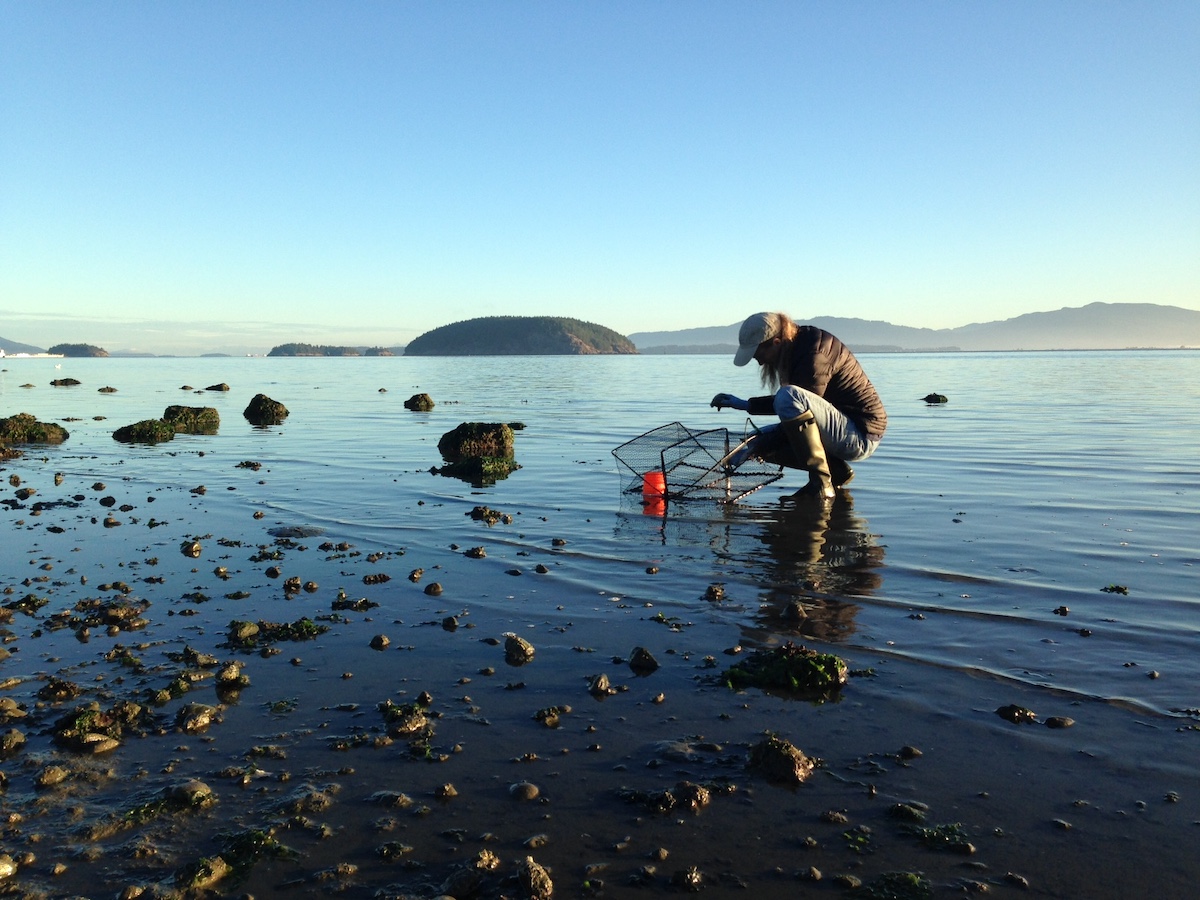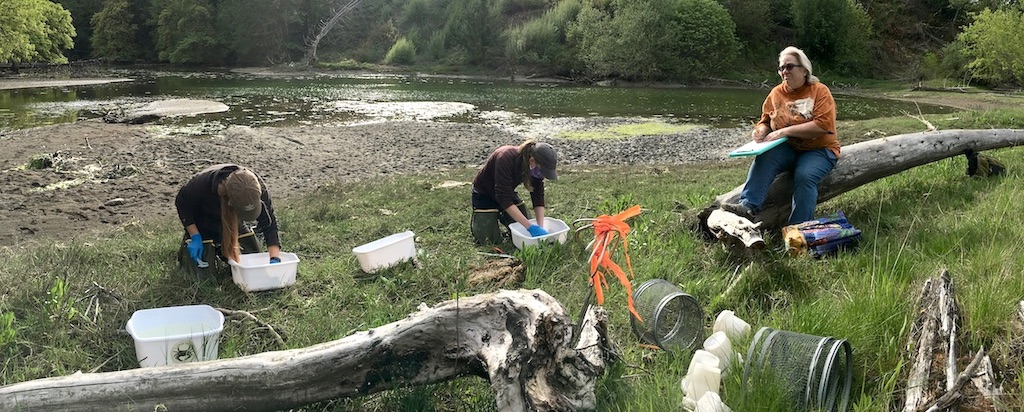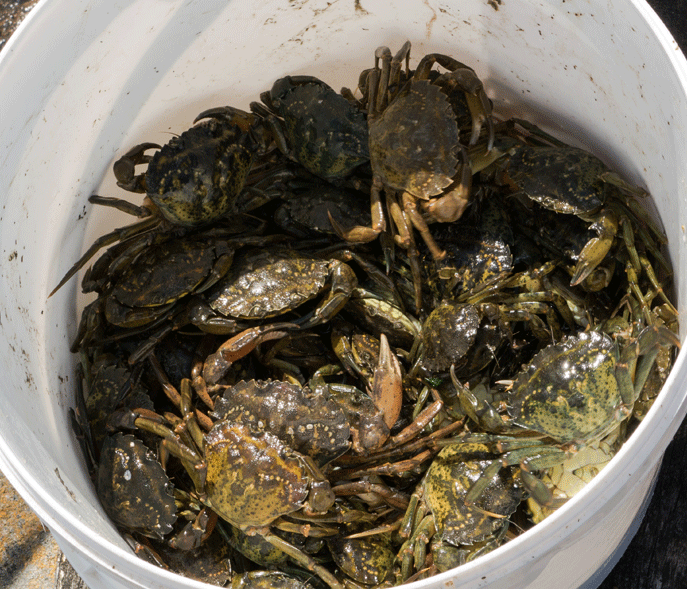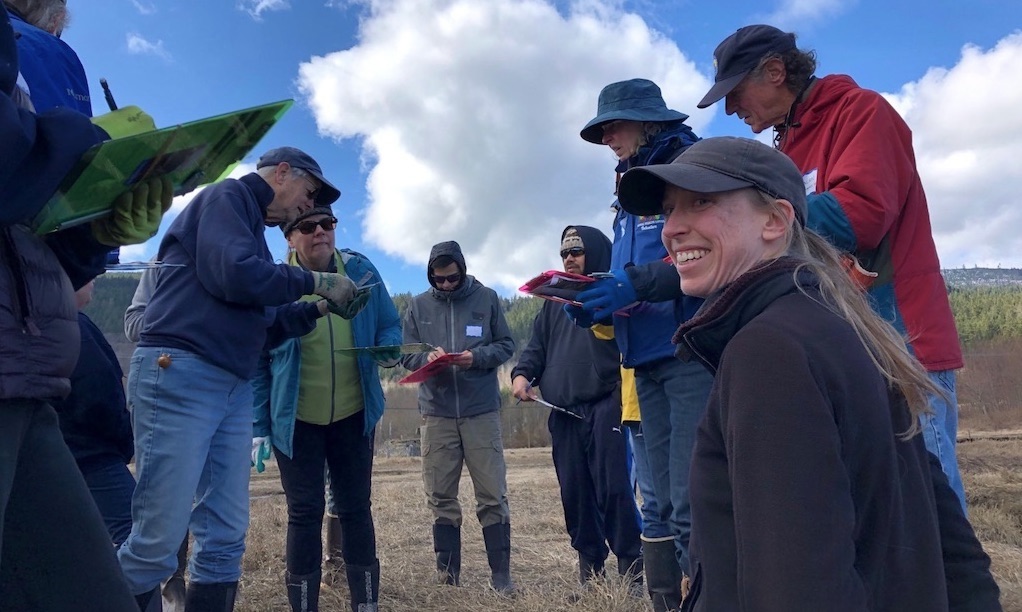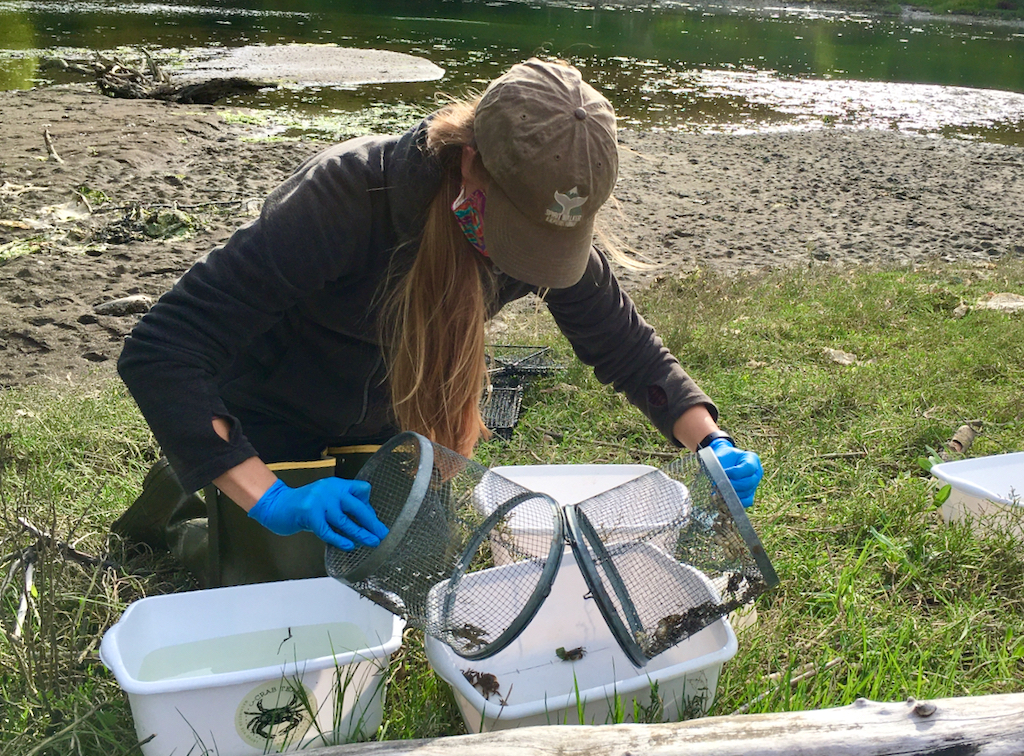Although no population seems to have established so far, there are worrying signs. Last September, the Crab Team caught seventeen green crabs over the course of two days at Drayton Harbor, near the U.S. – Canada border. It was the largest number of crabs ever caught in any one area of Washington’s inland shoreline. “Capturing that many crabs so quickly was definitely a wake-up call of a sort,” says Allen Pleus, a biologist with the Washington Department of Fish and Wildlife. “We have emergency measures now at Drayton.” The Lummi Department of Natural Resources has similar measures at nearby Lummi Bay.
The finding also caused ripples of worry to spread farther south. “For us, obviously we want to avoid the destructive consequences of a big infestation,” says Todd Woodard, the director of natural resources for the Samish Indian Nation in Anacortes, on Fidalgo Bay. Fidalgo Bay has a lot of eelgrass beds — prime habitat for crabs, salmon, and other species critical to the Samish. Biologists with the tribe have so far not caught any live green crabs at their one survey site, although a molted shell was found; and live crabs have been caught in Padilla Bay. “These things can really take hold,” says Matt Castle, a field technician on the project. “Some of the videos we’ve seen from the east coast, they show crabs erupting out of the seagrass like in a horror movie. We really don’t want to see that here.”
But the coronavirus pandemic, and Governor Jay Inslee’s stay-at-home order have complicated this year’s management effort somewhat. In the past, biologists have found that the most effective time to trap for green crabs is in April and May. “That’s when we get the most bang for our buck,” Pleus says. But at the time of writing, state government workers are not allowed out to do surveys until a safety protocol has been approved. Similarly, biologists with the Samish are trying to figure out the most prudent way to continue their surveys. “We worry about the crabs making inroads while we’re not out there,” Woodard says.
Survey effort
A sparer survey effort is not the only consequence of the coronavirus pandemic for the Crab Team. In mid-April, organizers cancelled the 2020 Salish Sea Ecosystem Conference. “It was a real disappointment,” Grason says. Not only had she and her colleagues organized a session devoted to green crabs, but the conference would have provided them all with a rare chance to all be in the same room at the same time so they could plot strategy and new lines of research.
Most of the biologists concerned with the European green crab live in Washington, but not all of them. One who could not attend the conference was Carolyn Tepolt, a research scientist at the Woods Hole Oceanographic Institution in Falmouth, Massachusetts, who has been collaborating with Grason for several years.
Tepolt studies the genetics of biological invasions. For her, the European green crab provides a fascinating case study. “Ecologically, it’s really unfortunate they’re finding green crabs in Salish Sea, but from an evolutionary biology perspective, this is a fascinating opportunity,” Tepolt says. It is rare, she tells me, for scientists to catch an invasion as it is expanding. “Usually,” she says, “we find them afterwards when they’re in high numbers. The fact that Emily’s group has been doing such amazing monitoring means they’re able to track the expansion and find crabs in places where they haven’t become established, where they’re beginning to come in.”This means that Tepolt can watch a sort of experiment unfold in real time: What happens to a small population as it expands in time and space and, possibly, abundance? Is there enough dispersal to keep populations connected? And how quickly are the green crabs able to adapt to new environments?


